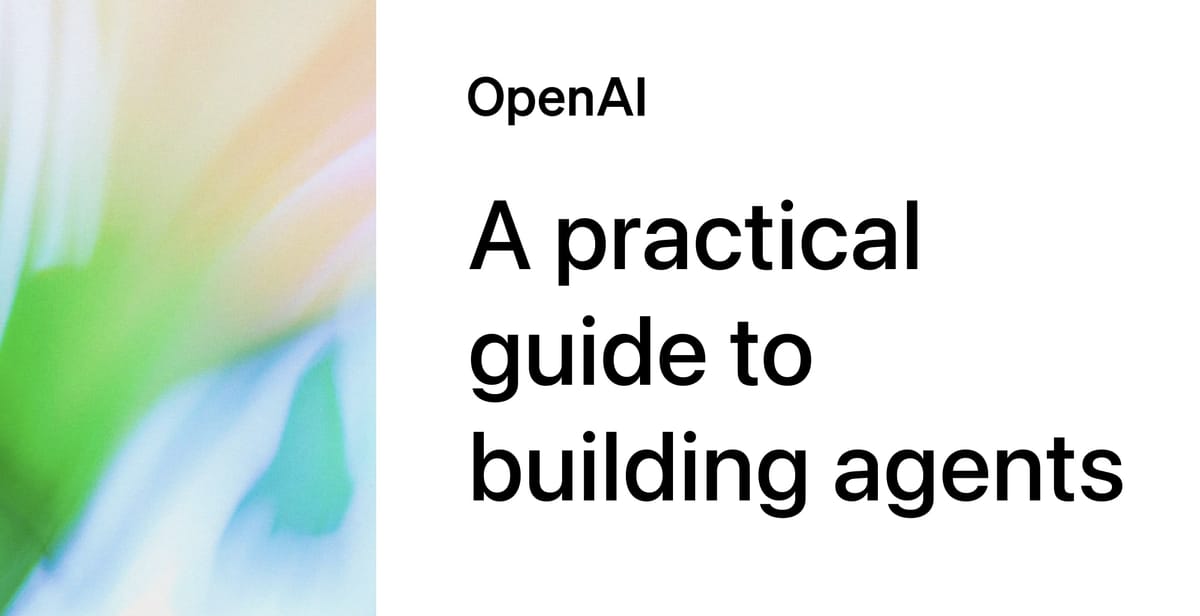OpenAI Publishes Practical Guide for Developing AI Agents
OpenAI has released a detailed guide to help product and engineering teams build AI agents capable of executing complex workflows independently.
OpenAI has quietly published a 32-page guide titled "Practical Guide to Building Agents", offering developers a methodical approach to creating systems that can independently accomplish tasks with minimal human intervention.

Key Highlights
- Framework for autonomy: Identifies workflows that benefit most from agent autonomy.
- Three foundational pillars: Models, tools, and instructions.
- Orchestration patterns: From single-agent loops to multi-agent ecosystems.
- Safety measures: Layered guardrails and human-in-the-loop safeguards.
What Are AI Agents?
"Agents are systems that independently accomplish tasks on your behalf."
OpenAI defines agents as systems leveraging language models to control workflow execution, access tools for context, and operate within defined guardrails. The guide emphasizes focusing on use cases where traditional automation falls short, such as:
- Complex decision-making (e.g., refund approvals).
- Systems with unwieldy rule sets (e.g., vendor security reviews).
- Processes dependent on unstructured data (e.g., insurance claims processing).
Technical Architecture
The guide breaks down agent design into three core components:
- Models: Choosing the right language models to balance accuracy, latency, and cost.
- Tools: Defining reusable, well-documented tools for data retrieval and action.
- Instructions: Crafting clear, unambiguous instructions that break tasks into steps and anticipate edge cases.
OpenAI recommends starting with the most capable models to establish performance baselines before scaling down to cost-effective options.
Orchestration Patterns
Teams are encouraged to begin with single-agent systems, where an agent loops through tool calls until exit conditions are met. For more complex scenarios, the guide details:
- Manager patterns: A central orchestrator delegates to specialized agents.
- Decentralized patterns: Agents hand off control directly to other agents as needed.
Security and Guardrails
The guide emphasizes layered defense mechanisms, including:
- Relevance classifiers to keep agents on-topic.
- Tool safeguards to assess risk before actions are executed.
- Human intervention for high-risk actions or repeated failures.
Practical Implementation
The guide provides a code-first approach, showcasing examples using OpenAI's Agents SDK to build single and multi-agent systems with minimal code. Developers can access the full guide here.
Chris McKay is the founder and chief editor of Maginative. His thought leadership in AI literacy and strategic AI adoption has been recognized by top academic institutions, media, and global brands.
Related News
Users Mourn Lost AI Boyfriends After OpenAI Updates
OpenAI's recent ChatGPT updates have angered users who say their AI companions' personalities changed, sparking grief and backlash.
Beginner-Friendly AI Agent Projects to Learn and Build
Explore five practical AI agent projects for beginners, covering scheduling, coding, content creation, research, and search functionalities.
About the Author

Alex Thompson
AI Technology Editor
Senior technology editor specializing in AI and machine learning content creation for 8 years. Former technical editor at AI Magazine, now provides technical documentation and content strategy services for multiple AI companies. Excels at transforming complex AI technical concepts into accessible content.